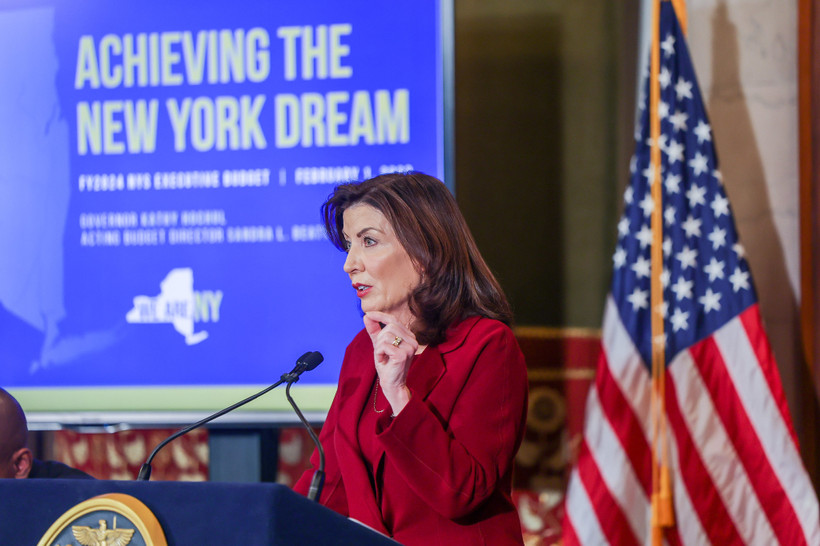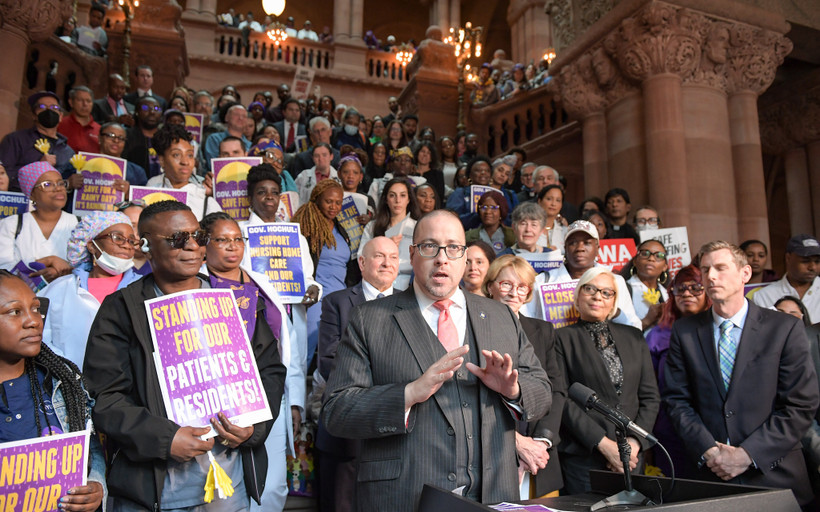What Kathy Hochul’s Budget Tells Us About New York’s Cap-and-Invest Plan
And what it doesn’t.


Guidelines limiting gifts of taxpayer resources have “no teeth whatsoever,” according to good government watchdog.
Local regulations haven’t kept up with the rollout of new surveillance tech. Some reformers see Washington as their best hope.
As the state legislature considers a bill to change warranty payments, unions join their bosses to make car companies pay more.
Hochul’s proposed Medicaid cuts include $125 million from Health Homes, a program that connects the neediest New Yorkers with medical care, food assistance, and more.
One in five kids in New York live in poverty. Legislators are pushing Hochul to fulfill her promise to cut that rate in half.
The Assembly and Senate want to beef up labor standards and farmland protections for clean energy projects. Developers say that would slow down the energy transition.
State investigators accused the gas utility of “sloppiness” in managing customer funds, but took a light touch in enforcement.
What are industrial development agencies?
A new bill to municipalize Long Island’s utility includes key worker protections that the union had sought.


